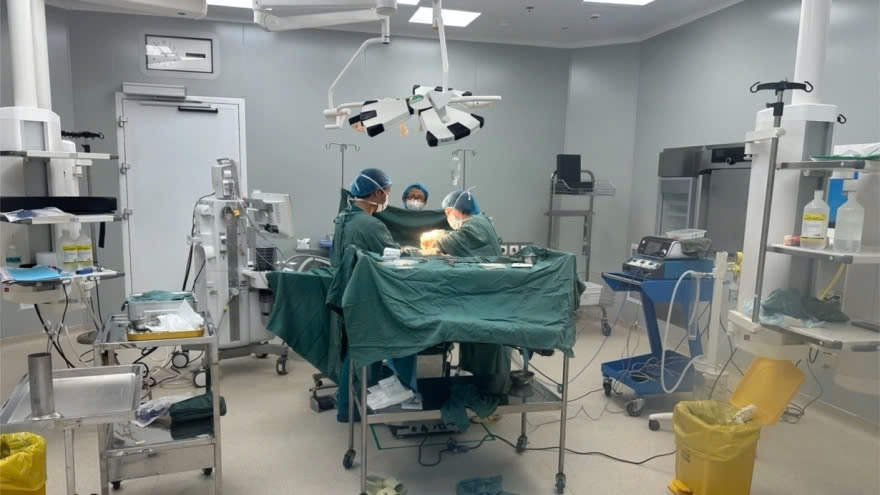Liver cancer is the leading cause of cancer-related deaths in Vietnam
VOV.VN - Liver cancer has surpassed lung cancer to become the leading cause of cancer-related deaths in Vietnam, with 77% of cases occurring in men.

Statistics show that approximately 71,300 men die of cancer every year, and three types of cancer with the highest mortality rates are liver, lung, and stomach cancer. Meanwhile, among women around 48,800 cancer-related deaths occur, with the most common types being breast, lung, and liver cancer.
Assoc. Prof. Dr. Pham Van Binh, deputy director of the Central Cancer Hospital in Hanoi, stated that Vietnam ranks 101st out of 185 countries and territories worldwide and 20th out of 47 Asian countries in terms of liver cancer incidence rates.
Currently, liver cancer has surpassed lung cancer to become the most common cancer in Vietnam, with nearly 26,500 cases recorded each year, accounting for 14.5% of all cancer cases, according to Globocan, International Agency for Research on Cancer. Of the total, 90% are hepatocellular carcinoma (HCC).
It is worth noting that 77% of liver cancer cases are male. Liver cancer also has the highest cancer mortality rate, with 25,272 deaths annually, making up 21% of all cancer-related deaths.
At a recent conference on research and applications in medicine organized in Hanoi, Prof. Nguyen Van Kinh, deputy chair of the Vietnam General Medical Association, pointed out that Vietnam currently ranks fifth among the ten countries with the highest liver cancer mortality rates worldwide, at 23 per 100,000 people.
Experts said the symptoms of liver cancer are often atypical and easily overlooked, which is why most patients seek medical consultation and diagnosis at an advanced stage. This late diagnosis complicates treatment and incurs significant medical costs.
Vietnam is implementing a national plan for viral hepatitis prevention and control in the 2020–2025 period, with priority given to developing evidence-based policies, guiding comprehensive viral hepatitis prevention and control, and preventing hepatitis virus transmission through vaccination.
Key initiatives include prioritizing the use of rapid tests for screening, integrating hepatitis screening into other programs such as HIV, obstetrics, and tuberculosis screenings, and simplifying testing procedures.
By 2030 Vietnam aims to have 30% of hepatitis B and C virus infections diagnosed; 50% of eligible cases to begin treatment; and 90% of those starting treatment for hepatitis B and C to achieve viral suppression or be cured. It is estimated that curing hepatitis C can reduce the risk of liver cancer by 80% and mortality by 75%.


